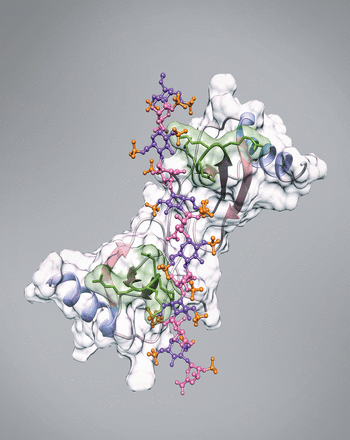If you like 3D structure and modeling – this is the course for you!
Learn to:
Predict DNA/RNA and protein structure
Predict receptor-ligand binding
Simulate molecular motion
Remember – All function derives from 3D structure and dynamics!

This course introduces techniques of molecular simulation relevant to biomolecular systems, and provides extensive hands-on experience with current modeling and simulation programs. Topics include biomolecular 3D structure prediction (homology modeling), prediction of ligand binding modes (molecular docking), 3-D structure simulation (molecular dynamics), and the calculation of interaction energies (MM/GBSA).
The course uses both lectures and computer laboratory time to provide an understanding of current computational methods, with emphasis on their strengths and limitations. Coursework includes lab projects, presentations, which are performed in both classroom and computer lab during class hours under the supervision of the instructor and qualified TAs. Project 1 will probe the limits of homology modeling, using a small protein test case. Project 2 will examine the ability of computational methods to predict the interaction of protein-ligand complexes. The results of each project will be presented in 10-minute oral presentations. Students will gain hands-on experience with the following programs: AMBER (sander, tLEaP, ptraj), AutoDock, and VMD. A familiarity with protein structure and basic physics or chemistry will be useful, but not required.